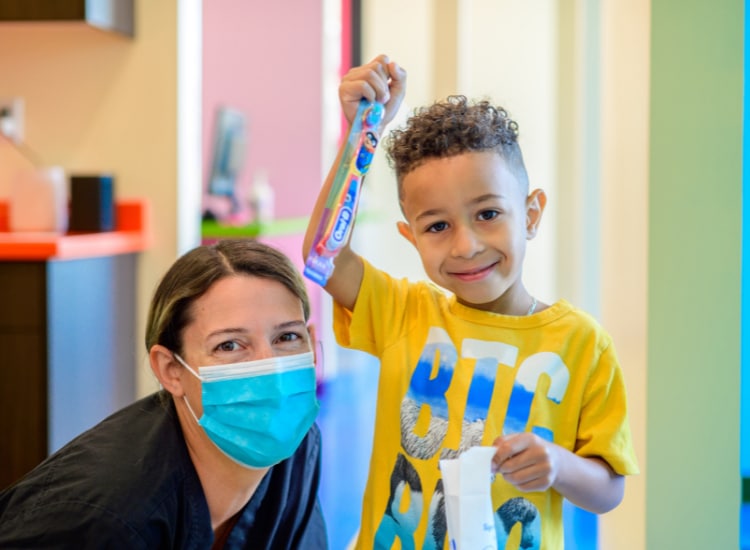Cavity Prevention Tips

Kids Dentist, Dr. Ari Hobfoll
Cavity prevention tips from our pediatric dentist in slc
Every day, we see parents who are astounded to hear that their child has a cavity. After all, their youngster brushes and flosses his or her teeth every day. Despite brushing and flossing on a regular basis, some children develop cavities. Unfortunately, brushing and flossing aren’t always enough to keep cavities at bay. Thus, understanding what causes tooth decay is the first step toward cavity prevention. Below, our pediatric dentist Murray Utah shares cavity prevention tips.
The Cause of Cavities
Tooth decay is caused by a variety of circumstances. First, Dr. Hobfoll, the best pediatric dentist in Salt Lake City, shares that bacteria play a significant impact. When bacteria colonies go unchecked, they develop plaque, a white sticky coating made up of millions of germs. Plaque begins to coat the teeth more and more when brushing is neglected or not done correctly. When these bacteria are allowed to grow unchecked for an extended period of time, they create acids that destroy tooth enamel. This is why it’s essential to visit your kids dentist near me.
Cavity Prevention Advice From Our Pediatric Dentist
Fortunately for you and your child, there are simple behaviors you may acquire to reduce the likelihood of them developing a cavity. Below, our pediatric dentist SLC shares cavity prevention tips.
Increase Water Intake
Food particles are washed away by water. It also keeps the lips moist and the pH adjusted. Sugary drinks, such as soda and sports drinks, should be avoided. Juices should also be avoided! As follows, juices are high in sugar, and some juices, such as orange juice, are also high in acidity. Thus, the nasty bacteria in your child’s mouth are fed by a combination of sugar and acid.
Choose Non-Starchy Foods
Sugar gets a lot of flak for creating cavities, but starchy snacks are just as dangerous. Little crackers and pretzels are two examples of starchy snacks. Starchy meals adhere to your teeth and make them gummy for hours. The same may be said for any sticky snack, such as fruit-shaped gummy candies and raisins. Foods that attach to teeth remain in the mouth for a long time, feeding germs. Avoid them, especially if your child will be unable to brush his or her teeth for an extended period of time.
Brush As Soon As First Tooth Erupts
Brushing should begin as soon as the first tooth appears. It is not required to use fluoride at this age. A pea-sized dab of fluoride-containing toothpaste is acceptable for youngsters aged 3 to 6 years and those who can spit out toothpaste.
“Brushing should begin as soon as the first tooth appears. With your young baby or infant, a washcloth or teething toothbrush can be used until they age. ” – Dr. Ari Hobfoll
Look Into Dental Sealants
Deep grooves on molars, in particular, might be difficult to reach and brush well. Our friends at High Desert Dental, Grand Junction dentist, explain that you may ask your child’s dentist to apply sealants to your child’s teeth. Thus, this provides an extra layer of protection against cavities until their enamel fully develops.
See Kaleidoscope Kids Dentistry For A Cleaning Twice a Year
Importantly, tartar can be removed with regular professional cleanings. Furthermore, your pediatric dentist near me can use fluoride treatments to assist your child’s teeth to strengthen as they grow. Finally, your dentist will be able to detect decay in its early stages. As follows, early intervention alleviates discomfort. Additionally, it prevents more costly dental repairs in the future. Contact Kaleidoscope Kids Dentistry today to schedule your child’s next appointment. We can’t wait to meet you!





